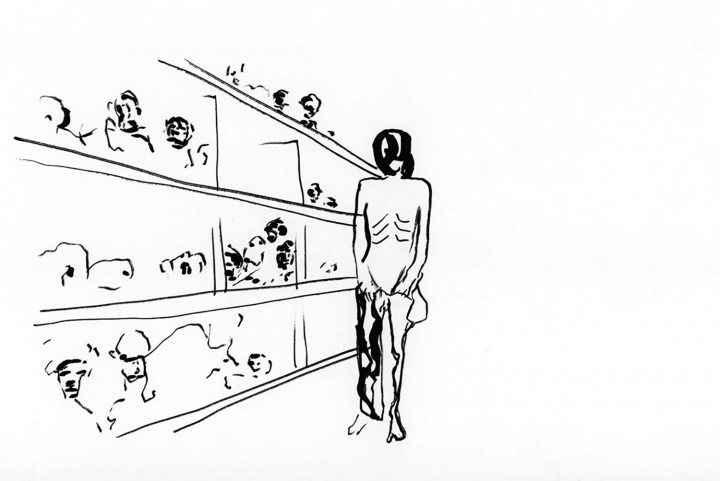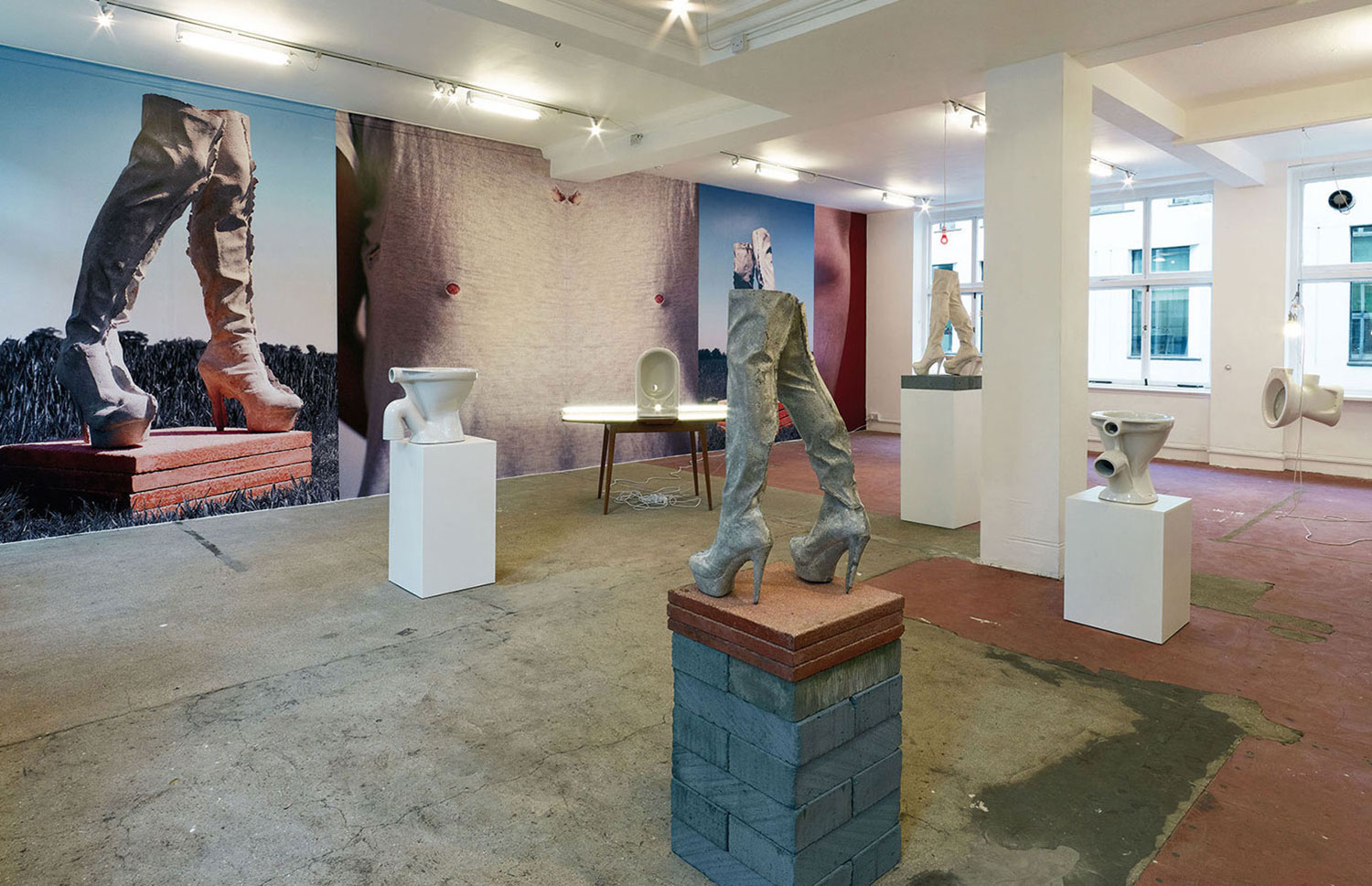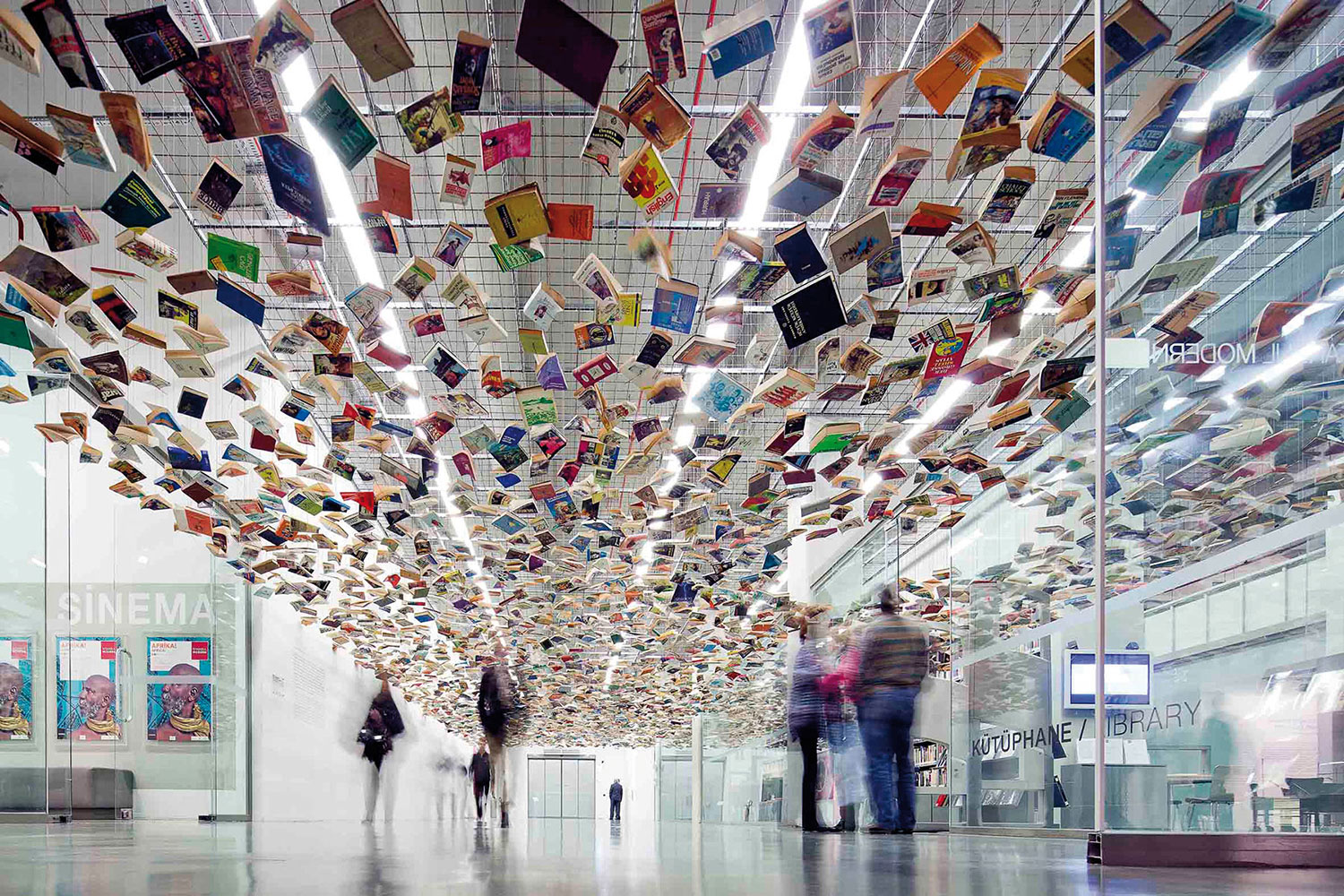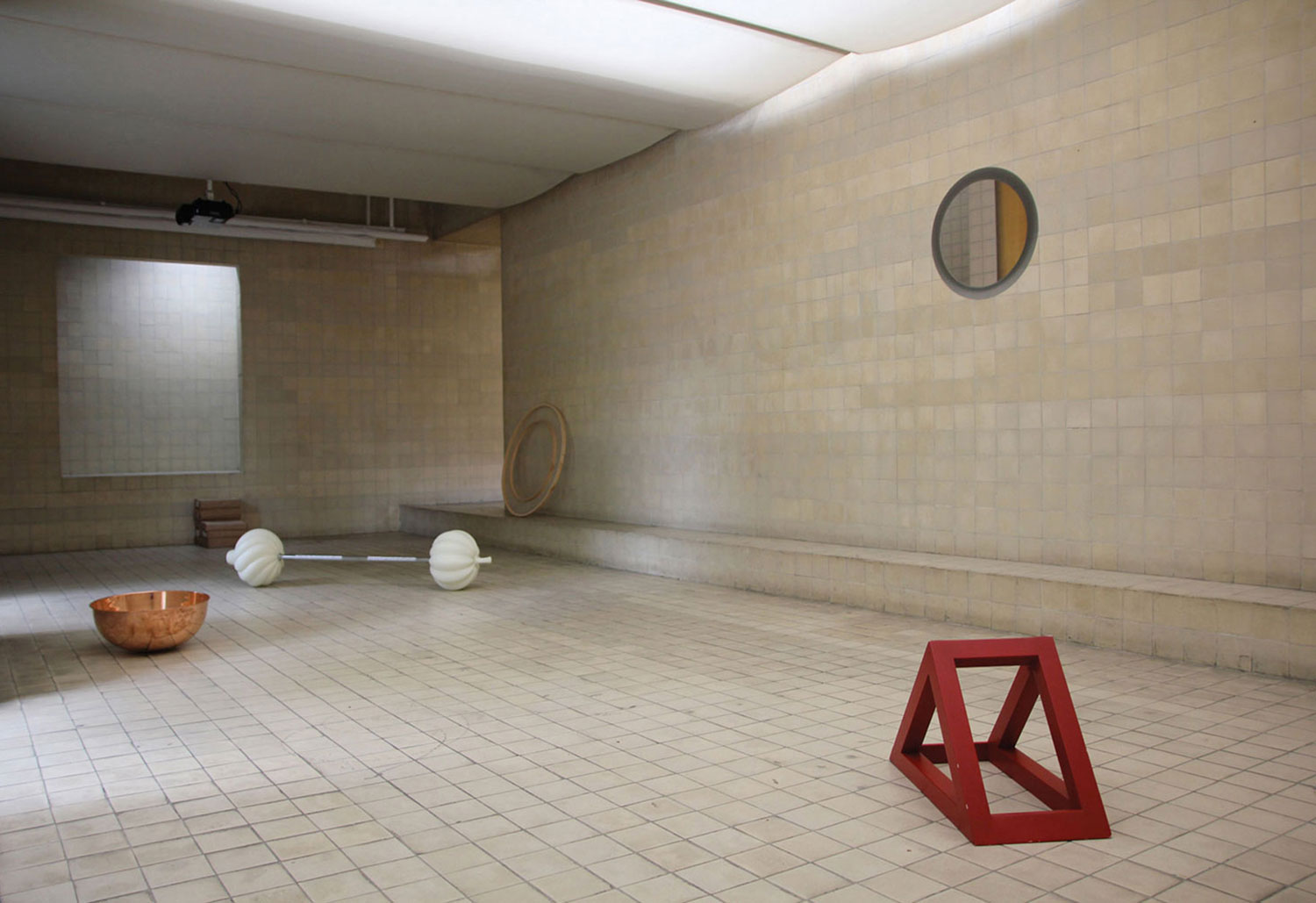
The various drawings that comprise Biogenetics, the new artist’s book by Avner Ben-Gal, edited by Yael Bergstein1, are arranged sequentially, unfolding and almost linearly progressing in time like a movie or play. The accumulation of images from one section to the next, from one drawing style to another, creates a sort of epic: visual effects, moral conflicts and constitutive myths give rise to hybrid dynasties and genealogies, the apocalyptic lowlife biology of a world with no distinction between the human, the bestial, the vegetative and the mechanical. The title — Biogenetics — suggests an attempt to unravel a genetic code, a formal hereditary pattern that is revealed already in the book’s opening section: digital drawings of individual and group portraits of family resemblance, executed using facial composite software, forming what Ben-Gal refers to as the “Founding Fathers.” The automated technology that generated this group of portraits supports their inhumanity, giving them a sense of existence outside historical time; consequently, the drawings that follow, done by hand, acquire an evidential, almost documentary, aspect.
In the opening section Ben-Gal didn’t try to imitate portraits of existing people using this very basic, low-res software, nor did he want to create a generic look. He invented a kind of familial appearance, the same facial features running through different characters. He was not searching for a surreal visage with no personality, but something with which one could identify — a concrete human type that might remind us of a real person. Beyond the matter of the constitutive myth with which the book opens, the book’s title, in relation to some of the images, draws a connection with a graphic rhetoric of taxonomy, of genetic, biological, or racial classification. Although none of the figures is easily given to classification, there are physical traits or deformities that seem to pass by inheritance from one generation of figures to another.
In fact the book is not occupied with scientific and pseudo-scientific representations — neither the old, like the physiological taxonomy of various peoples, nor the contemporary and hi-tech, such as nano-biology and genetics — but rather with the old world of commercial family activity and traditional goods. The title may be Biogenetics, but nevertheless we are introduced to a family running a shady business that sells used screws. In two sequential works, this occupation appears explicitly: Used Screws for Sale (2011) and Taking Over the Business (2011). The second work rearranges the elements of the first and sabotages them, and together they combine the genres of “spot the difference” and “before and after imagery.”
In the following section we are thrown into the daily world, into present time. The drawings in this section, done in blue pencil that seems to transform all the configurations into networks of varicose veins, present moral dilemmas. Not precisely expressionistic, they are humorous and speak in a didactic tone, as if they were made to illustrate children’s books gone crazy.

The artist calls these scenes “issues” — encounters that raise questions. A good example is Untitled (2011): a male figure has come to buy some ice cream, it’s the end of the day, everything has already begun to drip, it’s all dirty, animals and flies are buzzing around. He is hot and sweaty, and as he approaches the ice cream counter dollar bills are falling out of his pocket and being snatched away by birds. Behind the counter stands a woman, half-cat half-human, and it’s unclear whether she’s selling or buying, but she is in control. She strikes a selfish and arrogant pose, with no seeming intention of sharing. She is eating and enjoying herself. It’s reasonable to suppose that the male figure will not be having any ice cream. At first glance he appears monstrous, but then one realizes he could be anyone, a rather human figure, pathetic and ageless, with a kind of monstrous bestial face that might be a mask or might simply indicate he is not very handsome.
Ben-Gal creates intense situations, but their context of display, their actual order of appearance within the general flow, either as a book or an exhibition, distances them. It’s connected to the way he deals with moral issues in his work. He avoids righteousness, and this avoidance leads to indeterminacy. In the work that follows the ice cream drawing, Dragonfly wants to fuck with you (2011), another encounter occurs: three figures are sitting next to each other on a balcony. The thickset, naked Asian man sitting in the middle is pointing out to the guy on his right — a thin naked man with a scar on his scalp and a deformed penis — that the dragonfly to their left wants to fuck. The Asian is trying to pair them together. It’s unclear whether the guy is into it, but the dragonfly is definitely interested because she is bending over to take a shy and expectant peek at him. There is no attempt at obfuscation, no escape into abstraction or artistic posturing.
In the book’s closing text, curator Philipp Kaiser, who worked with the artist on two solo exhibitions2, calls this tendency “unambiguous ambiguity.” At the level of scene depiction, at the narrative level, there is something very explicit, but with that narrative explicitness Ben-Gal creates a dilemma, a question, an open, unresolved scene. On one hand the artist is reductive in his work, but against that reduction he juxtaposes narrative complexity. The openness and indeterminacy are emphasized by his shifts in graphic mode: from anatomic representation to tachist3 surfaces, while complicating each of these modes. In this regard the artist says: “I try to create a tension between bluntness, between affectivity and explosiveness.”

The figure in the center of the work Withdrawal (2011) exemplifies the illogical logic that characterizes Ben-Gal’s act of drawing. Like other figures it is performing a certain activity, at times routine, at times ironically heroic; in this case it’s hard to decide. The figure in Withdrawal is a kind of automaton: a human profile of a balding man with a ponytail whose body is in fact a pocket knife functioning as a plow, against the background of a minimally signified barren landscape. This creature is not really a hill farmer, and like other figures you cannot decide where his body ends and where it extends into the constellation of a mechanical system. According to the artist, the picture he had in mind when he made this work was of junkies who, as part of their recovery and rehabilitation process, are given a plot of land to keep them busy and away from drugs. Withdrawal is not the retreat of the cultured human from the natural state and not an escape from the artificiality of modern life back to nature, but a symptom of kicking drug addiction.
In the abovementioned text, Kaiser provides an additional point of view, focusing on the way the artist disrupts existing graphic conventions. He also defines Ben-Gal’s work as a particular kind of new history painting, more subtle and intimate than formal and idealizing, which investigates archetypes within typologies of images and deconstructs them. Ben-Gal’s imagery is not based on photography, but rather on photographic memory and knowledge, as shown in Babi Yar (2011), and in two more drawings echoing historical images from concentration camps: one a famous image from Buchenwald that has undergone distancing and abstraction, and another based on an image of corpses being carted off in Auschwitz after the camp was liberated. “I wouldn’t want to limit the discussion of my work to its political aspects,” states the artist. All the aforementioned images were drawn from memory and are connected to the way the artist and his generation was brought up. When asked to define the book, Ben-Gal used the word “autobiographical,” but only in the sense that autobiography means telling a story. It’s like an autobiography of drawing styles that he has been exposed to from an early age. The book does not imitate these styles, but departs from them, using them in order to rupture and deform.





